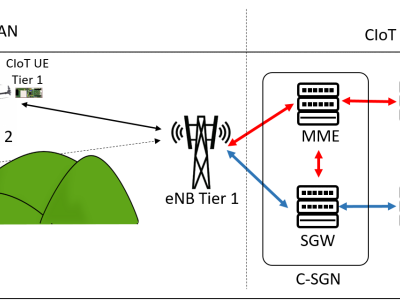VTS 2021 UAV Innovation Challenge - UNS

- Citation Author(s):
-
Srdjan Sobot
- Submitted by:
- Srdjan Sobot
- Last updated:
- DOI:
- 10.21227/n8qa-2y02
- Data Format:
- Links:
 456 views
456 views
- Categories:
- Keywords:
Abstract
For the innovation challenge for unmanned aerial vehicle (UAV) communications, we propose to demonstrate a two-tier Low Power Wide Area Network (LP-WAN) based on UAV base stations suitable for dynamic deployment and reconfiguration in deep rural areas. The proposed UAV-based LP-WAN network augments the existing macro-cellular NB-IoT network (Tier 1) with either an additional layer of mobile NB-IoT base stations or an additionaly layer of mobile LoRa base stations (Tier2). Mobile Tier 2 NB-IoT/LoRa base stations provide connectivity to a set of mobile UAV-based NB-IoT/LoRa user equipment deployed in the areas without direct Tier 1 NB-IoT network coverage. The proposed two-tier LP-WAN network scenario is suitable for various agricultural, forestry and environmental applications such as livestock monitoring.
Instructions:
Logs represent radio signal measurements of the backhaul link (NBIoT link between Tier 1 drone and mobile operator base station) for different altitudes from the ground. For every altitude, we sent five packets from our custom-designed NBIoT device to BS. At zero and five meters from the ground, UE did not have direct LoS with the base station, which is directly reflected on radio conditions, i.e., SNR is visibly reduced. At 10, 15, and 20m from the ground, radio conditions are noticeably better. And finally, for 25 and 30m from the ground, radio conditions are again visibly reduced because the UAV was positioned above the base station and only served by side lobs of BS antenna.







